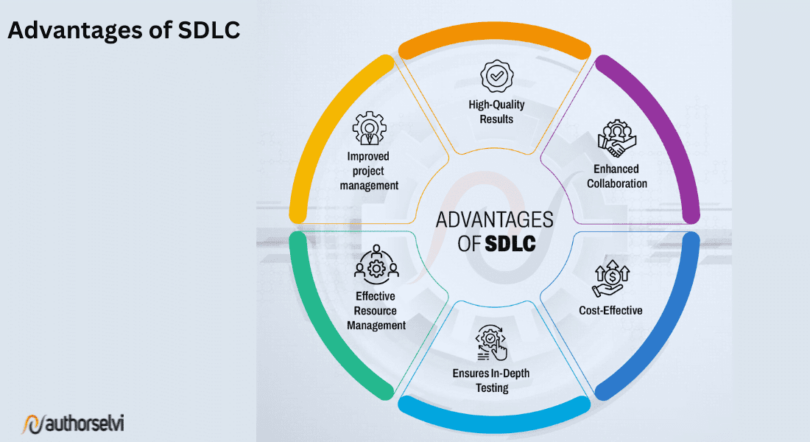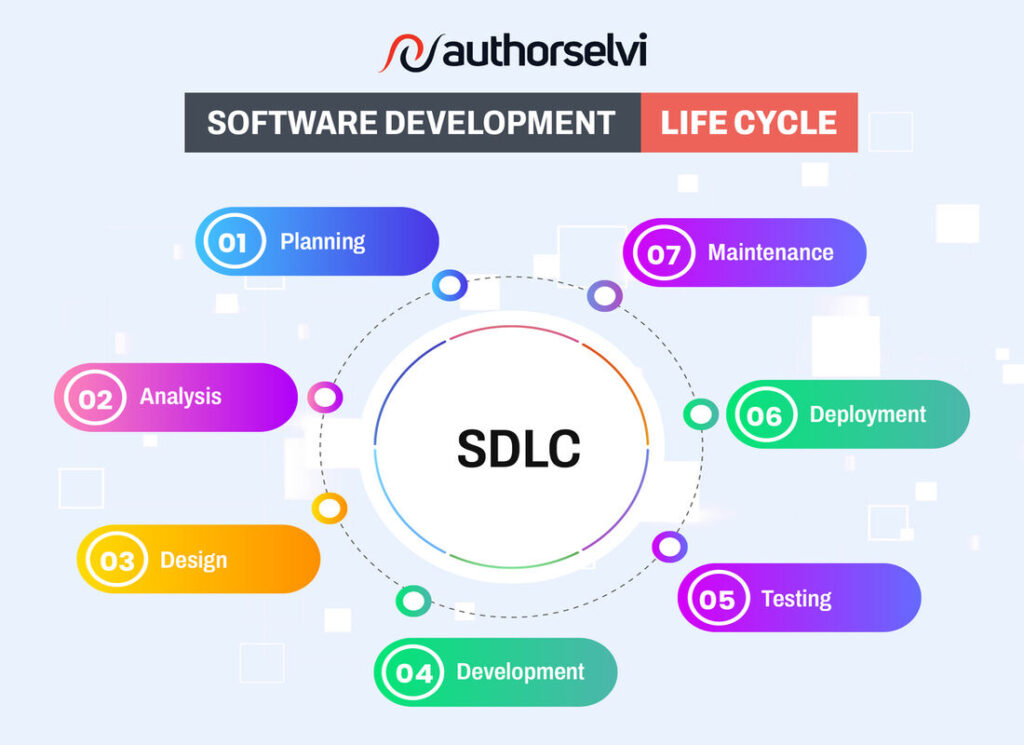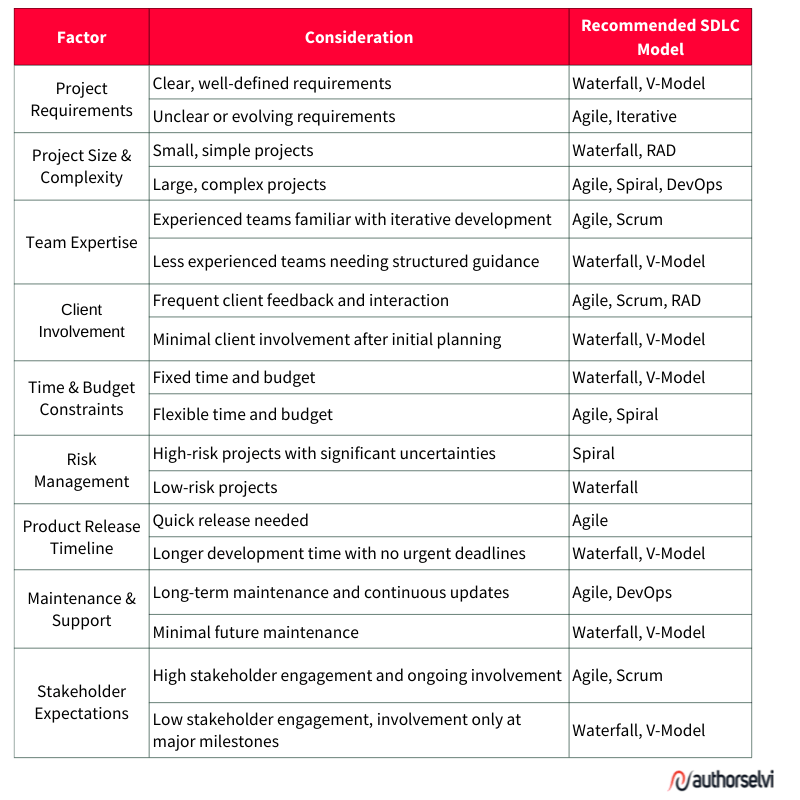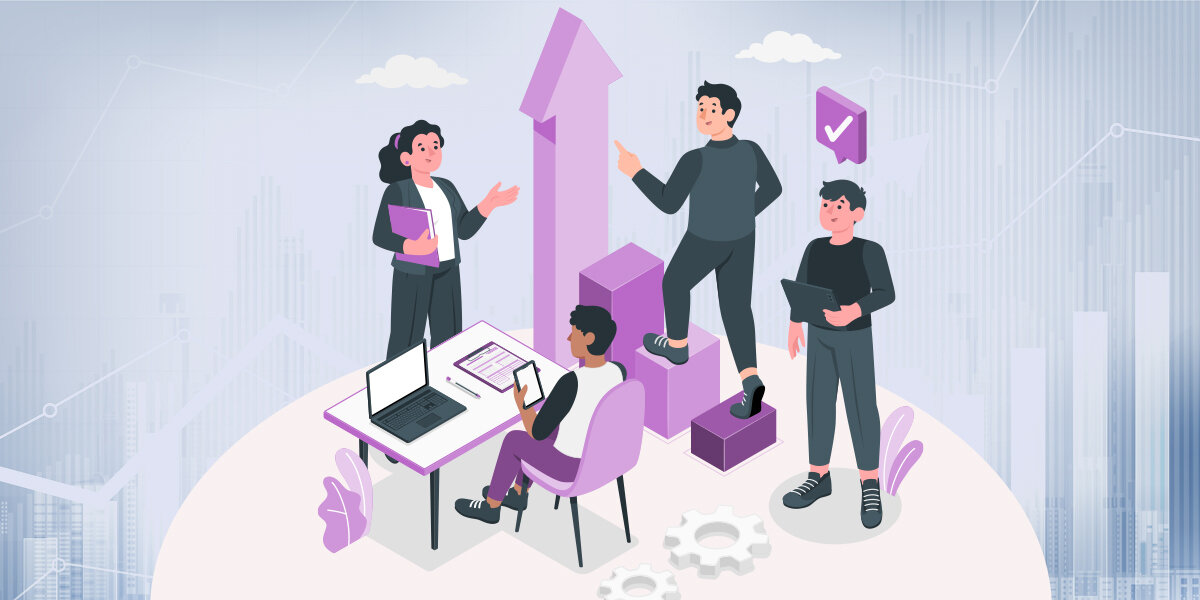Starting a business is an exciting journey, but it comes with its own set of challenges, especially when it comes to building software or digital products. Whether you’re creating an app or a custom software solution, understanding the Software Development Life Cycle (SDLC) is crucial. SDLC is a step-by-step process that helps the business and improve project management efficiently.
For business founders, having a basic grasp of SDLC can make a huge difference. It helps you transform their ideas into successful products. Also you can communicate better with your tech team, manage timelines, and ensure your product meets your goals without unnecessary delays or costs.
This blog will walk you through the essentials of SDLC, including its key concepts, methodologies, and best practices. So get ready to set your business up for success in building software development. Let’s dive in!
What is the Software Development Lifecycle?
The Software Development Life Cycle (SDLC) is a well-structured step by step process of building high-quality software in a time- and cost-efficient manner, ensuring it effectively meets user requirements. This process involves developing, deploying, and maintaining software systems to improve quality standards.
Advantages of SDLC

Improved project management: It is a structured process that ensures the project stays on track and aligned with its goals. This consistent approach enables managers to deliver projects on time and within budget.
Consistently High-Quality Results: SDLC provides a standardized framework and methodology, ensuring consistency in software development. This consistency enhances software quality, ensuring the final product meets client expectations seamlessly.
Enhanced Collaboration: SDLC creates a collaborative environment by offering a shared framework and language for team communication. This synergy boosts software quality and ensures the final product meets the client’s exact needs.
Cost-Effective: Cost SDLC identifies the issues early using prototyping tools like Figma, enabling proactive solutions and reducing development costs.
Ensures In-Depth Testing: SDLC ensures rigorous testing at every stage, guaranteeing the creation of reliable and user-friendly software. With automated testing tools, DevTools enables unit, integration, and performance testing, enhancing overall software quality and deployment readiness.
Effective Resource Management: The SDLC enables efficient resource utilization, leading to higher productivity by clearly defining team roles and responsibilities. DevTools offers a unified platform for development tasks, minimizing context switching, reducing errors, and automating processes to maximize resource efficiency and productivity.
Phases of the Software Development Life Cycle
The SDLC outlines tasks for software engineers at each stage, ensuring the final product meets customer expectations and stays within budget. It consists of six key stages that guide the development lifecycle.
Software Development Life Cycle
- Planning
- Analysis
- Design
- Development
- Testing
- Deployment
- Maintenance

1. Requirement/Planning Phase
The requirement analysis phase is the foundation of the SDLC, ensuring the success of a software project by defining clear and accurate goals. Software engineers gather input from stakeholders (end users, product owners, internal and external experts, and developers) to design the best solutions.
This phase helps identify potential risks early, preventing delays, additional costs, and rework. It fosters collaboration and clear communication, ensuring all team members and stakeholders share a unified understanding. By addressing risks upfront, engineers can deliver projects on time, within budget, and with the expected quality, resulting in a high-value, user-centric product.
2. Analysis
The analysis stage involves gathering specific details for a new system and outlining initial prototype ideas. Developers define prototype requirements, evaluate alternatives to existing systems, and conduct research to understand end-user needs. They often create a Software Requirement Specification (SRS) document, detailing software, hardware, and network requirements to ensure efficient resource use and prevent budget overruns, especially when collaborating with other development teams.
3. Design
The design stage focuses on creating software applications from the end user’s perspective. It plays a crucial role in shaping the user experience. While the analysis phase emphasizes technical requirements, the design phase prioritizes usability and functionality for users. These two stages are different, and developers should handle them separately to ensure both technical and user-centric requirements are effectively addressed. SRS is for the software architecture and Design Document Specification (DDS), is for design and finalized after thorough evaluation and serves as the blueprint for development.
4. Development
In this phase developer teams write the actual code for the software. This stage can take a long time if the code is complex, but it can be shorter with tools like low-code/no-code platforms or AI-assisted development. To manage the code effectively, especially when multiple developers are working together, teams use tools like a CI server (Continuous Integration server) to merge code into a shared codebase and avoid conflicts. It’s also important to set clear rules for coding style so the code stays consistent and easy to maintain, even if the original developers leave the team. The stage ends when all the code for the planned features is written, though some adjustments might be needed later based on testing results.
5. Testing
After writing the code, teams move to the testing phase. They evaluate the application’s performance, load capacity, security, and user experience to ensure it meets the goals set earlier in the SDLC. Tests are designed based on these goals, and any issues identified may require code updates and retesting. While manual testing is an option, teams often use automation frameworks like Selenium and Cucumber to efficiently test at scale and ensure the application performs as expected.
6. Deployment and Release
Once testing is complete, the next critical step is deployment. This phase ensures your app or software is fully prepared and accessible for end users. It encompasses both manual and automated processes, such as distributing updates, applying patches, and managing releases, to ensure seamless functionality. Before the official product launch, software engineers and stakeholders closely monitor how the new solution interacts with users, ensuring it performs as intended and delivers a smooth, reliable experience.
7. Maintenance
The post-release phase focuses on maintaining software functionality, updating it to meet quality standards, and enhancing it over time to attract and retain users. The software development process provides a structured framework to minimize hiccups and deliver solutions efficiently. However, deployment doesn’t end once the software is live; continuous monitoring, updates, patches, and upgrades are essential to ensure optimal performance and address user-reported issues. Maintenance activities, such as resolving bugs or implementing changes, are critical for larger systems and ensure the software remains effective and relevant throughout its lifecycle.
Choosing the Right SDLC Model for Development
Selecting the right SDLC model is vital for your software development project. Every model has its advantages and disadvantages, so it’s important to choose one that fits your project’s requirements.
Let’s explore some of the most popular SDLC models that have made a mark in the industry.
Waterfall Model: This traditional approach follows a linear and sequential process, where software development progresses through distinct stages—requirements, design, execution, testing, and release. Each stage must be fully completed before moving to the next, ensuring clear structure and deliverables. However, its rigidity makes it unsuitable for projects requiring flexibility, as any changes during intermediate stages can significantly increase development time, cost, and compromise the application’s quality.
Agile:
The Agile methodology mainly focuses on an iterative approach. It divides the software projects into smaller cycles called sprints. This allows teams to gather continuous feedback and make adjustments throughout the process.
If your software development project requires fast market releases, frequent feature updates, or the flexibility to adapt to changes during development, the Agile model is the ideal choice.
Spiral:
This model combines the structured approach of the Waterfall model with the flexibility of iterative development, visualized as a spiral with multiple loops. The number of loops varies depending on the project and is determined by the project manager. This model is a great choice for complex and large projects. The project manager can divide the larger project into smaller and can tract one feature at a time.
DevOps:
DevOps is a combination of software development (Dev) and IT operations (Ops).It helps to improve processes and work more efficiently. With DevOps, organizations can release updates faster and make continuous improvements. It also reduces the time needed for app development. At the same time, it improves the quality and reliability of each release. This makes DevOps a great solution for companies that want to work faster and better.
V-Model
The V-shaped model, also known as the Verification and Validation model, follows a sequential approach. Each development phase is paired with a corresponding testing stage, ensuring thorough quality checks throughout the process. The next phase begins only after the previous one is completed, ensuring rigorous quality checks at every step. This structured process guarantees a high-quality product by emphasizing thorough testing and validation throughout the development lifecycle.
Iterative
The Iterative Model works in cycles, with each cycle building on the previous one. It allows for gradual development and continuous improvement through feedback.
How to Choose an SDLC Model/Methodologies?

Conclusion
Are you a business owner looking to develop a high-quality app or software solution? Partnering with a trusted software development company can make all the difference. With a team of experienced and skilled developers, they can deliver top-notch software tailored to your business needs.
Not only will they ensure a seamless development process, but they’ll also help reduce costs, save time, and provide ongoing support to keep your project on track. By collaborating with the right experts, you can turn your vision into a successful, high-quality product. Contact us for more information info@authorselvi.com
